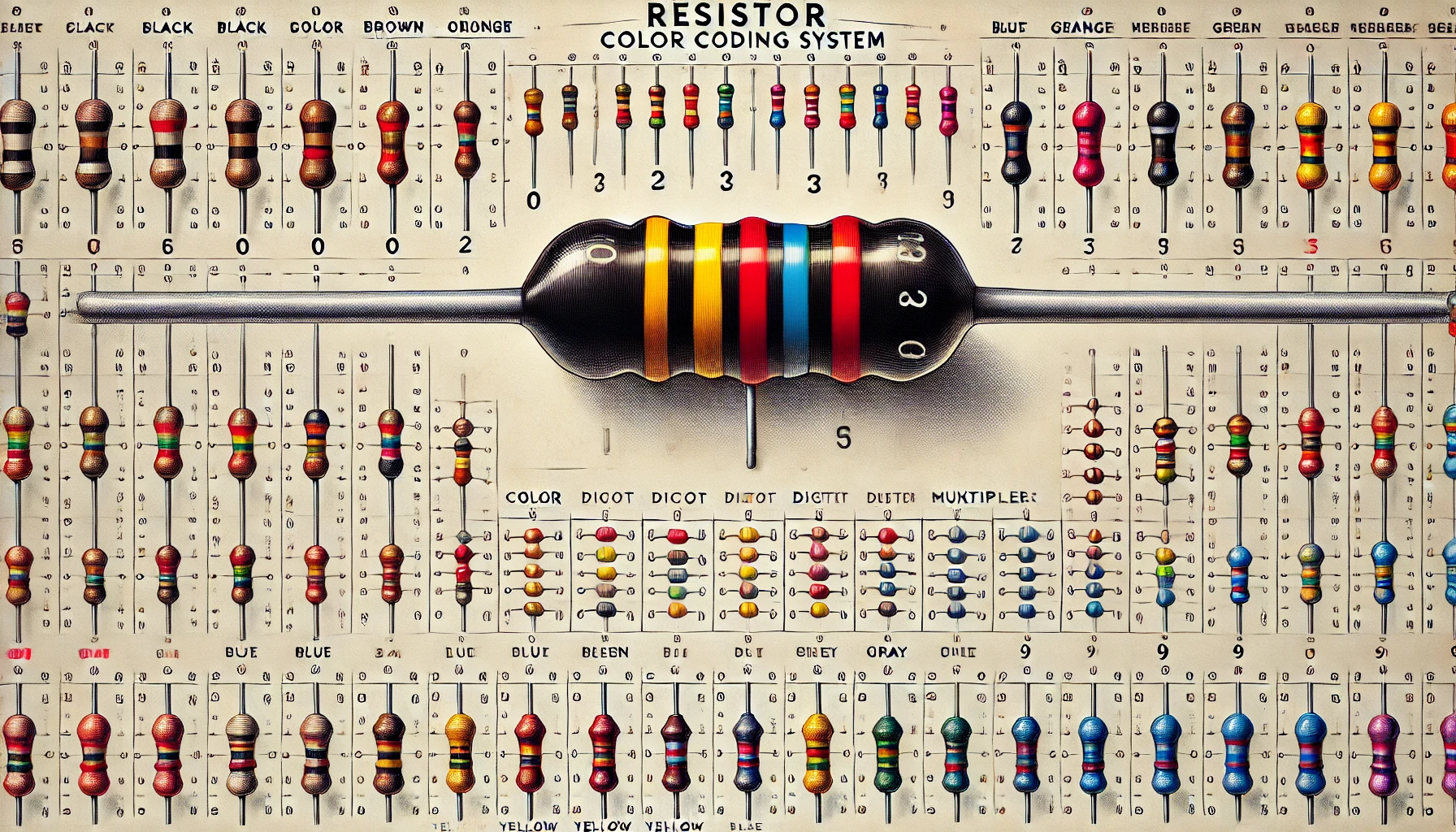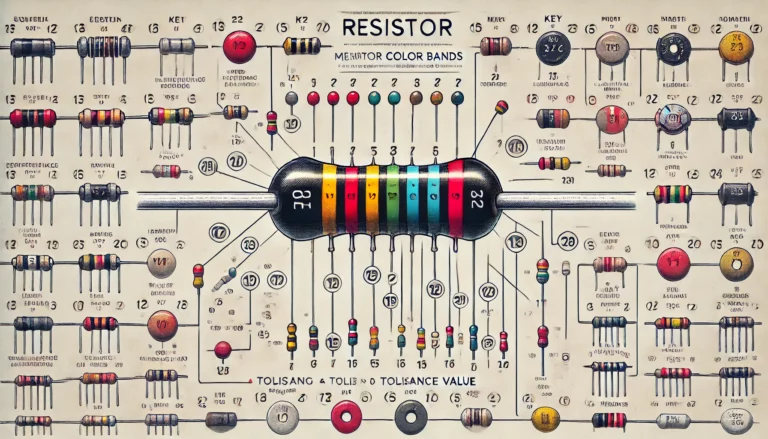What is the Color Coding System for Resistors
Resistors are fundamental components in electronics, serving to limit or regulate the flow of electrical current in a circuit. Understanding resistor color codes is crucial for anyone working with electronics, from hobbyists to professional engineers. The color coding system for resistors is a standardized method to easily identify the resistance value, tolerance, and sometimes even the reliability of a resistor without needing a measuring instrument. This system uses a series of colored bands painted on the resistor body.
The Basics of Resistor Color Coding
The resistor color code is based on a set of colors, each representing a number. The system typically involves four to six bands, each with its specific meaning. Here’s a quick overview:
- First Band: Represents the first digit of the resistance value.
- Second Band: Represents the second digit of the resistance value.
- Third Band (in 4-band resistors) or Multiplier Band (in 5 or 6-band resistors): This band represents the decimal multiplier.
- Tolerance Band: Indicates how accurate the resistor value is. This is usually gold or silver but can also be other colors in precision resistors.
- Additional Bands: In 5 or 6-band resistors, these can indicate additional significant digits or temperature coefficient.
The Color Code Table
To decode the color bands, you need to refer to a standard color code table:
| Color | Digit | Multiplier | Tolerance | Temperature Coefficient (ppm/°C) |
|---|---|---|---|---|
| Black | 0 | 10^0 | ||
| Brown | 1 | 10^1 | ±1% | 100 |
| Red | 2 | 10^2 | ±2% | 50 |
| Orange | 3 | 10^3 | 15 | |
| Yellow | 4 | 10^4 | 25 | |
| Green | 5 | 10^5 | ±0.5% | |
| Blue | 6 | 10^6 | ±0.25% | |
| Violet | 7 | 10^7 | ±0.1% | |
| Gray | 8 | 10^8 | ±0.05% | |
| White | 9 | 10^9 | ||
| Gold | 10^-1 | ±5% | ||
| Silver | 10^-2 | ±10% | ||
| None | ±20% |
How to Read Resistor Color Codes
Reading resistor color codes might seem complicated at first, but with practice, it becomes second nature. Here’s a step-by-step guide:
- Identify the Bands: Hold the resistor so that the tolerance band is to the right. Read the bands from left to right.
- Decode the Digits: Use the color code table to identify the value of the first two (or three) bands.
- Calculate the Multiplier: Determine the multiplier band value and multiply it with the number obtained from the first step.
- Consider Tolerance: Finally, look at the tolerance band to understand the possible variance in the resistor’s value.
Example
If a resistor has bands colored red, violet, yellow, and gold, the steps to decode this would be:
- Red = 2 (First digit)
- Violet = 7 (Second digit)
- Yellow = 10^4 (Multiplier)
- Gold = ±5% (Tolerance)
Putting it all together: 27 x 10^4 = 270,000 ohms or 270 kΩ with a ±5% tolerance.
Importance of Resistor Color Codes
Understanding resistor color codes is essential for several reasons:
- Quick Identification: Allows for rapid identification of resistor values without needing to measure them.
- Accuracy: Ensures correct component selection, maintaining circuit integrity.
- Efficiency: Speeds up the process of assembling and troubleshooting circuits.
Resistor color coding is a vital skill in the field of electronics. This color coding system enables quick identification of resistor values, ensuring accuracy and efficiency in circuit design and troubleshooting. By learning how to read these color bands, you can easily determine a resistor’s resistance value, tolerance, and reliability. Mastering resistor color codes not only saves time but also helps in maintaining the integrity of electronic projects. Whether you are a hobbyist or a professional, understanding these codes is crucial for effective electronic circuit management.
Tips for Remembering Resistor Color Codes
Here are some tips to help you remember the color code values:
- Mnemonic Devices: Use phrases to remember the order of colors. For example, “BB ROY of Great Britain had a Very Good Wife” can help remember the order: Black, Brown, Red, Orange, Yellow, Green, Blue, Violet, Gray, White.
- Practice Regularly: The more you practice reading and decoding resistor color codes, the more familiar you’ll become.
- Use Tools: There are many online tools and mobile apps that can help you quickly decode resistor values.
Conclusion
The resistor color coding system is a simple yet powerful tool that allows for the quick and accurate identification of resistor values. By understanding and mastering this system, you can enhance your efficiency and accuracy in working with electronic circuits. Whether you’re a beginner or a seasoned professional, the ability to read and interpret resistor color codes is an invaluable skill.
Remember to use mnemonic devices, practice regularly, and take advantage of online tools to become proficient in reading resistor color codes. With this knowledge, you’ll be well-equipped to handle any electronic project with confidence.





